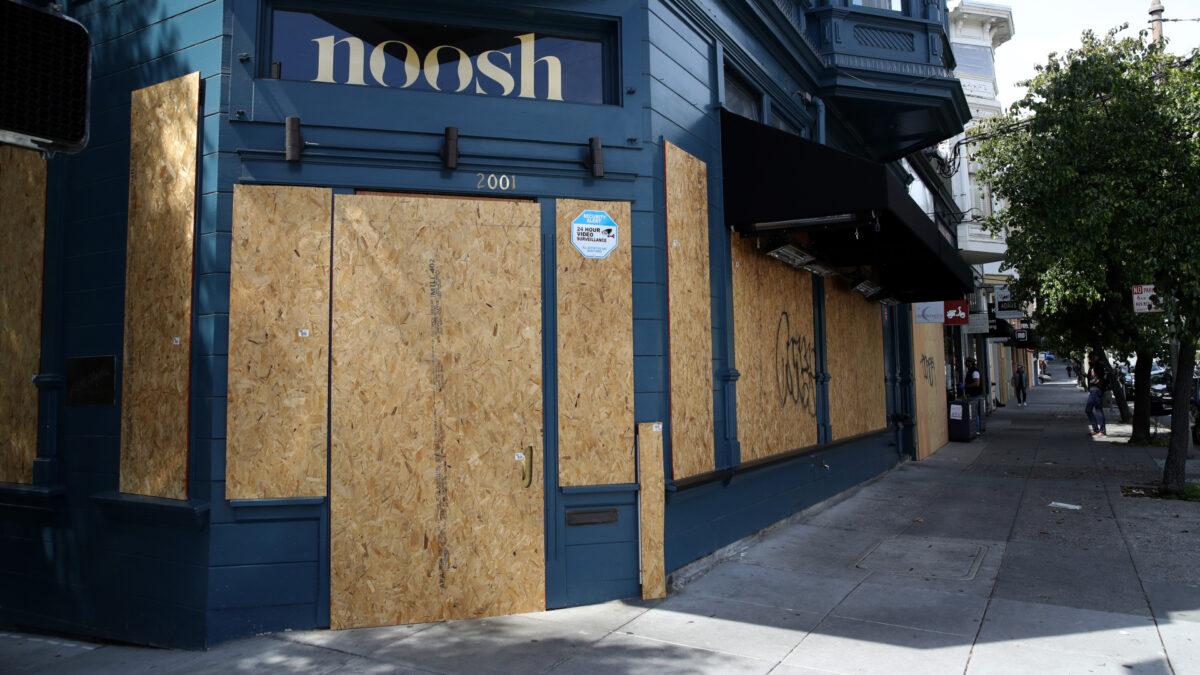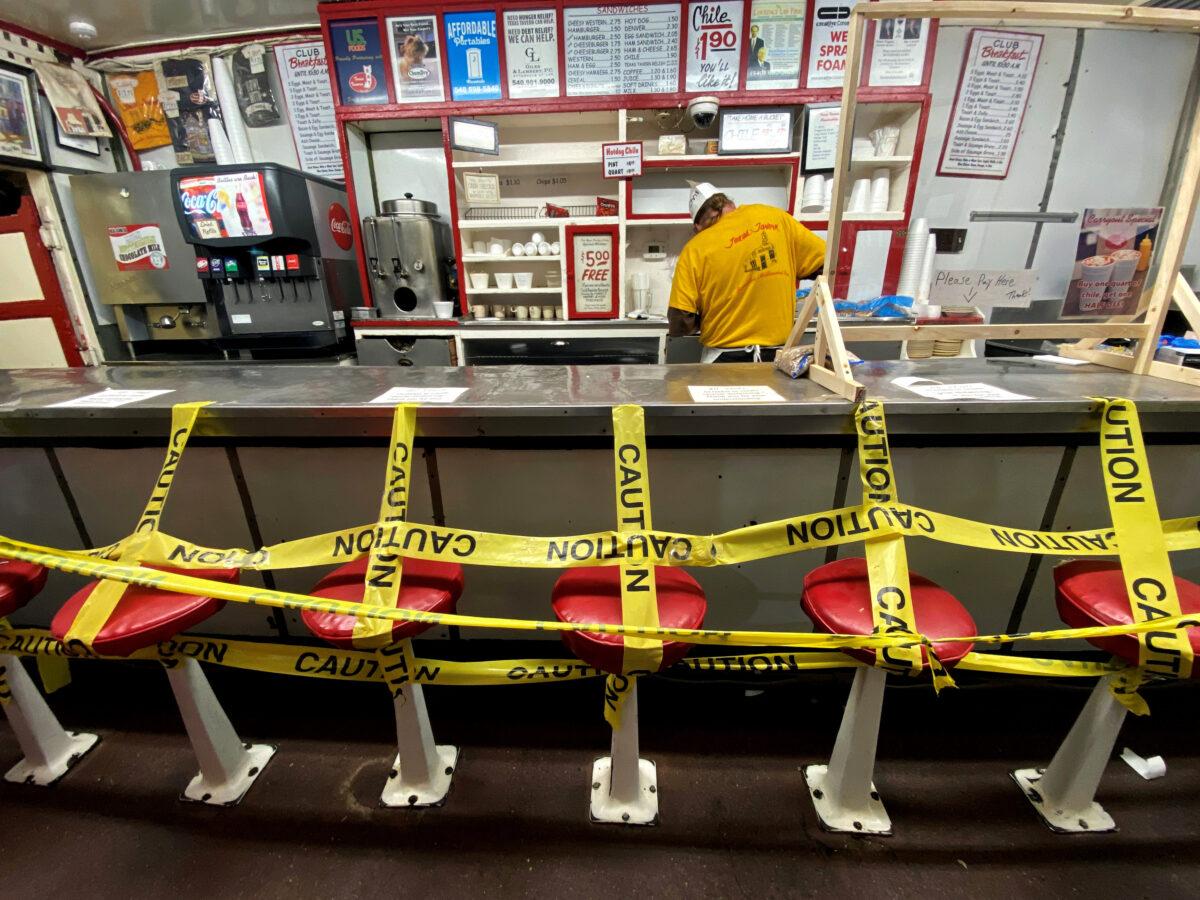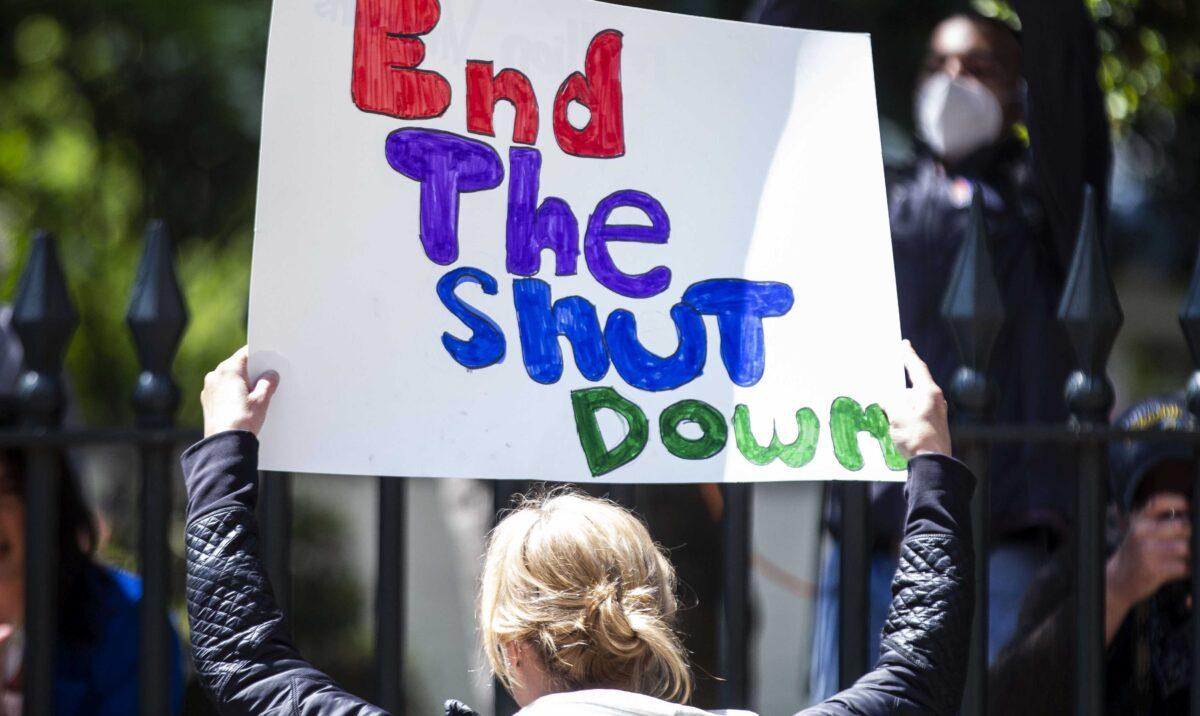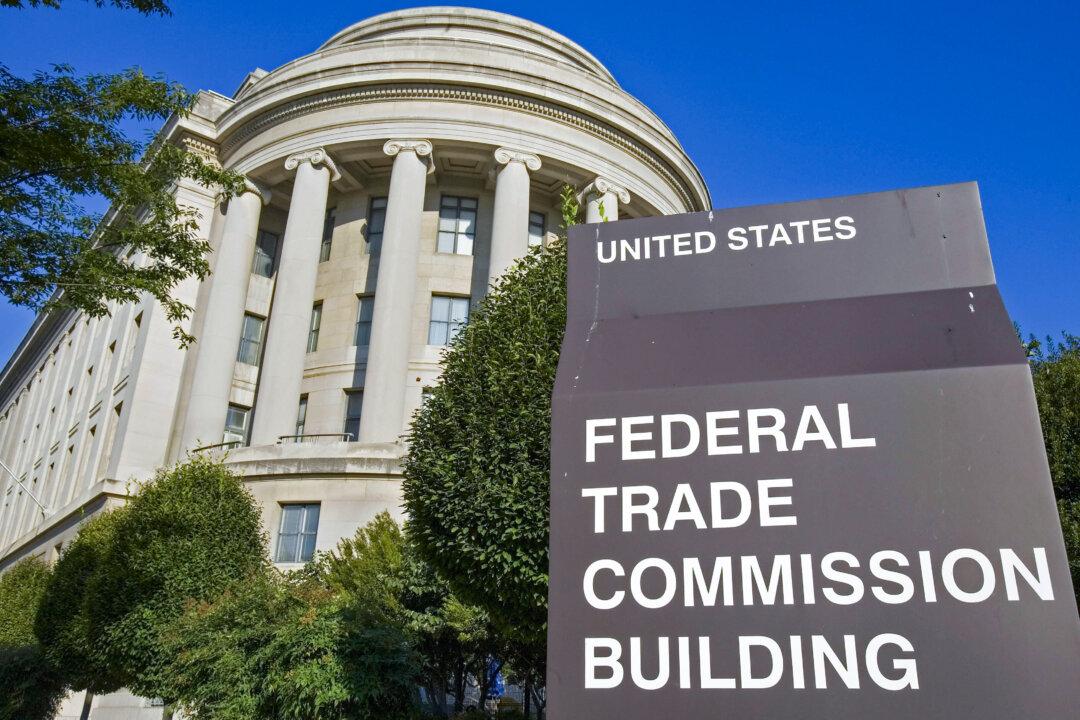The department’s seasonally adjusted, annualized quarter-on-quarter gross domestic product (GDP) number, typically abbreviated as SAAR QoQ, is an advance estimate and subject to revision.
The dismal GDP number for the January-to-March period of 2020 comes after the economy grew at a 2.1 percent rate in the last three months of 2019. Most of the key components of U.S. economic output—including consumer spending, which accounts for two-thirds of economic activity—fell sharply amid widespread business shutdowns aimed at stemming the spread of the virus.
“The economy is in freefall; we could be approaching something much worse than a deep recession,” said Sung Won Sohn, a business economics professor at Loyola Marymount University in Los Angeles. “It’s premature to talk about a recovery at this moment. We are going to be seeing a lot of bankruptcies for small and medium-sized businesses.”

The Commerce Department partly blamed the pandemic for the dramatic plunge in output.
“The decline in first-quarter GDP was, in part, due to the response to the spread of COVID-19, as governments issued ’stay-at-home' orders in March,” the department said in a note. “This led to rapid changes in demand, as businesses and schools switched to remote work or canceled operations, and consumers canceled, restricted, or redirected their spending.”
The department noted that the first-quarter GDP number doesn’t fully reflect the full economic impact of the pandemic because its calculation methods and sources didn’t completely capture the changes in economic activity that took place at the end of the quarter.

Hassett believes unemployment could reach between 16 percent and 20 percent in the second quarter, he told CNN on April 28.
The same day, Treasury Secretary Steven Mnuchin predicted the economy could rebound by late summer as states ease lockdowns and let businesses reopen.
“As states start opening up, I think you’re going to see a lot of demand come back,” Mnuchin told Fox Business Network. “Now again, the states are going to open up slowly, so you’re going to see June and July pick up, but I think by August and September, you’re going to see a big bounce back from what has been a very rocky period.”

The U.S. government has delivered four emergency relief packages, worth some $3 trillion, to prop up the economy amid the outbreak, and talks are in progress on a fifth.
The Federal Reserve has slashed interest rates to near zero and redeployed the broad extent of its crisis-era toolkit to prevent a financial meltdown, with the goal of giving the economy its best chance for a dynamic rebound once the pandemic subsides.
Trump, at a White House event on April 28 said he expects the fourth quarter “to be really strong, and I think next year is going to be a tremendous year.”
“The third quarter is a transition quarter. The second quarter is what it is,” Trump said.






Friends Read Free